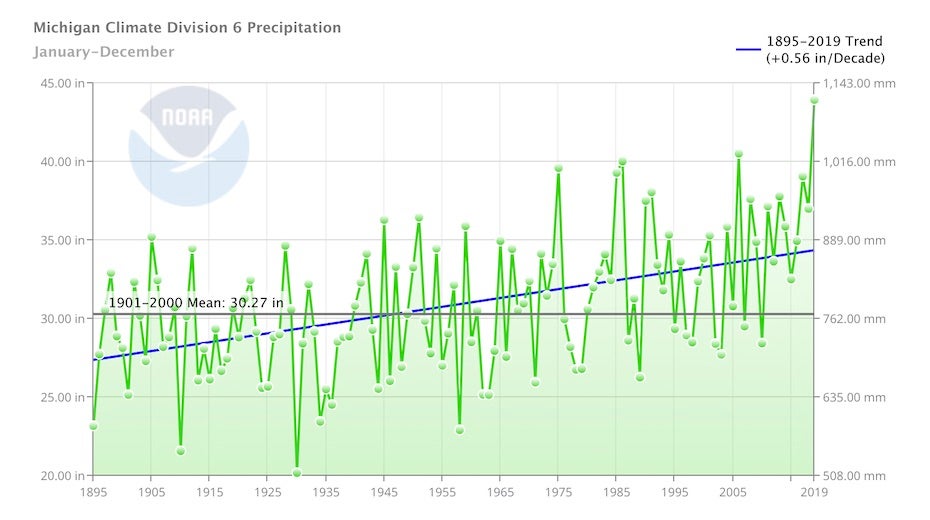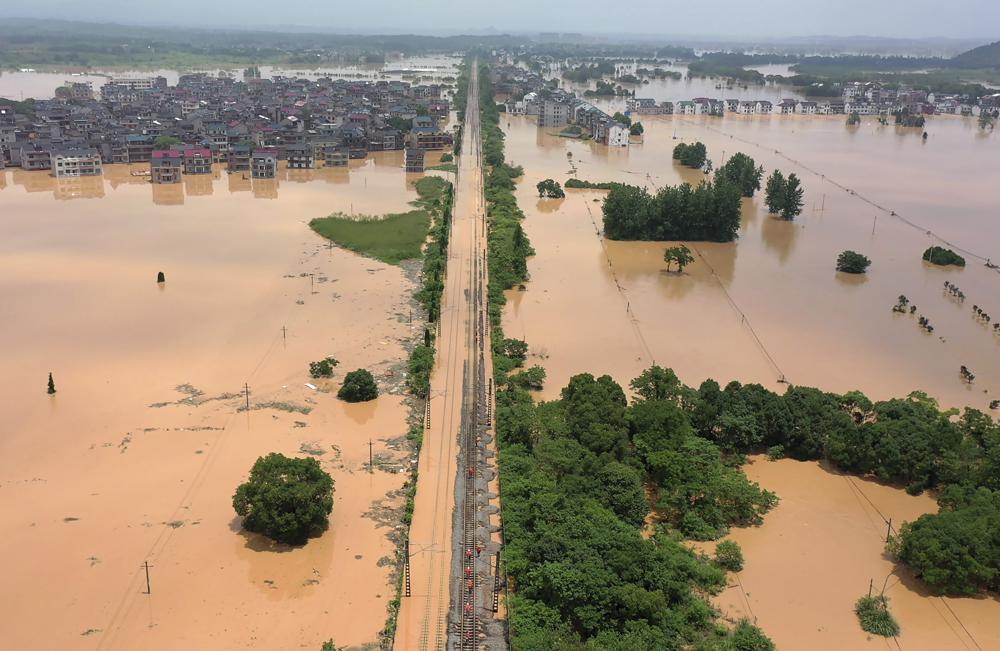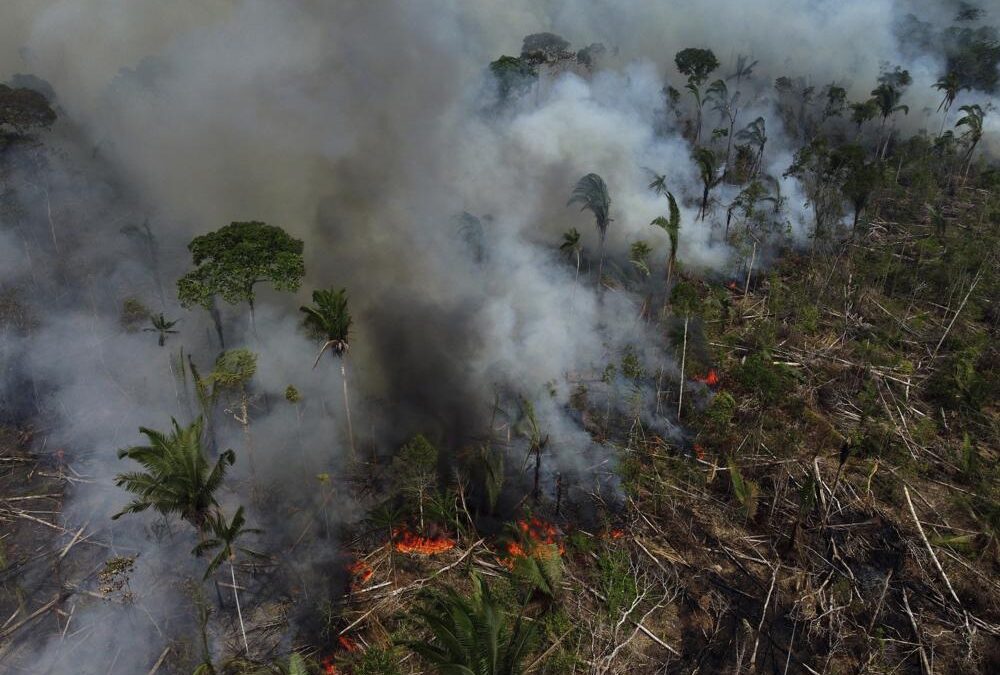Two Michigan dams breached, thousands evacuated amid “devastating” record flooding – “It’s hard to believe that we’re in the midst of a 100-year crisis – a global pandemic – and a flooding event that looks to be the worst in 500 years”
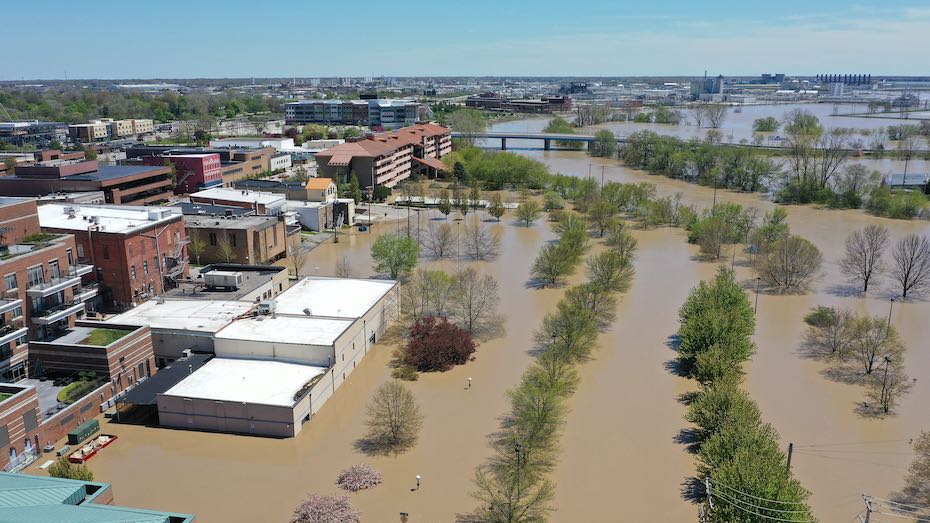
By Elisha Fieldstadt and Doha Madani
21 May 2020
(NBC News) – About 11,000 people in central Michigan were told to evacuate their homes after rapidly rising water overwhelmed dams, creating what the National Weather Service called a “life-threatening situation.”
Gov. Gretchen Whitmer said the destruction in Midland County caused by the failures of the Edenville and Sanford dams was “devastating,” and waters were expected to continue to rise until 8 p.m. Wednesday.
At 5:30 a.m., the Tittabawassee River had broken the record of 33.9 feet set during a 500-year flood event in 1986. At 12:45 p.m. on Wednesday, the river level was 35.013 feet and rising.
But in a positive development, the city of Midland announced the river crested on Wednesday afternoon at 35.05 feet — under the predicted forecast of 38 feet and about three hours earlier than predicted. […]
“It’s hard to believe that we’re in the midst of a 100-year crisis — a global pandemic — and a flooding event that looks to be the worst in 500 years,” Whitmer said Wednesday. [more]
2 Michigan dams breached, thousands evacuated amid ‘devastating’ flooding
Aging Dams, Changing Climate: A Dangerous Mix
By Bob Henson
20 May 2020
(Weather Underground) – The failure of two dams near Midland, Michigan, led to a flooding catastrophe Wednesday—one that highlighted the U.S. peril from the neglect of hundreds of aging dams coupled with the rise in intensified precipitation extremes from human-produced climate change. The collapse of the Edenville Dam on the Tittabawasse River, and the downstream overtopping of the Sanford Dam, led to massive flooding that swamped much of Midland (pop. 42,000) on Wednesday.
About 10,000 people were hastily evacuated after the dam failures on Tuesday afternoon. As of 2 pm CDT, water levels appeared to have stabilized just over a foot above the previous record of 33.89’ (Sept. 30, 1986) on the Tittabawassee River gauge at Midland. A worker with the U.S. Geologic Survey quickly installed a temporary gauge on Wednesday morning in anticipation that the existing gauge might be knocked out of service by the unprecedented flooding. […]
The perilous state of aging, privately held U.S. dams
A U.S. Corps of Engineers database, the National Inventory of Dams, shows that the Edenville and Sanford dams were both built in 1925 and owned by Boyce Hydro Power (which also owns two other dams on the Tittabawasse River). Both the Edenville and Sanford dams were rated as “high hazard”, meaning that loss of human life is likely were the dam to fail.
Most U.S. dams (about 56%) are privately owned, according to FEMA. That’s not the case for roads, bridges, sewers, and other vital infrastructure. “In general, very large dams are owned and regulated by the federal government,” notes FEMA, adding: “Given the diffuse nature of dam ownership versus regulation in the United States, it is apparent that dam safety and security are often not solely a federal, state or local issue.”
A major analysis released by the Associated Press in November revealed the compromised state of many hundreds of U.S. dams. The AP found that 1688 high-hazard dams across 44 states and Puerto Rico were rated in poor or unsatisfactory condition. […]
Extreme rains fueled the Michigan flood, and Midwest precipitation is increasing and intensifying with climate change
This week’s dam failures in central Michigan came after two days of intense rainfall on the north side of a slow-moving cut-off low making its way from the Midwest to the Appalachians. Midland reported a 48-hour rainfall total on Monday and Tuesday of 4.79”, its third highest two-day total in 50 years of recordkeeping behind only 11.78” on Sept. 10-11, 1986, and 8.05” on Sept. 11-12, 1986 (both coming from the same multiday event that drove the previous record flood in Midland).
With 12 days left in the month, Midland is just 1.35” away from its wettest May on record (7.32” in 2004). [more]
Aging Dams, Changing Climate: A Dangerous Mix

Social distancing in emergency shelters? Michigan flooding response complicated by COVID-19
By Omari Sankofa II
21 May 2020
DETROIT (Detroit Free Press) – It’s hard enough trying to keep Michigan safe in the wake of COVID-19, the worst pandemic in 100 years.
Now add in what’s being called a 500-year event, according to Gov. Gretchen Whitmer — the massive flooding in Midland County.
“I feel like I’ve said this a lot over the last 10 weeks, but this is an event unlike anything we’ve seen before and we’ve got to continue to all work together to observe best practices, do our part to help one another, and to wear our masks and continue to try to social distance,” Whitmer said at a Wednesday news conference.
Whitmer jokingly admonished a few members in the audience who weren’t standing at least 6 feet apart, but the moment underscored a genuine challenge — how to handle a natural disaster in the middle of a health pandemic that already has claimed 5,000 lives in Michigan.
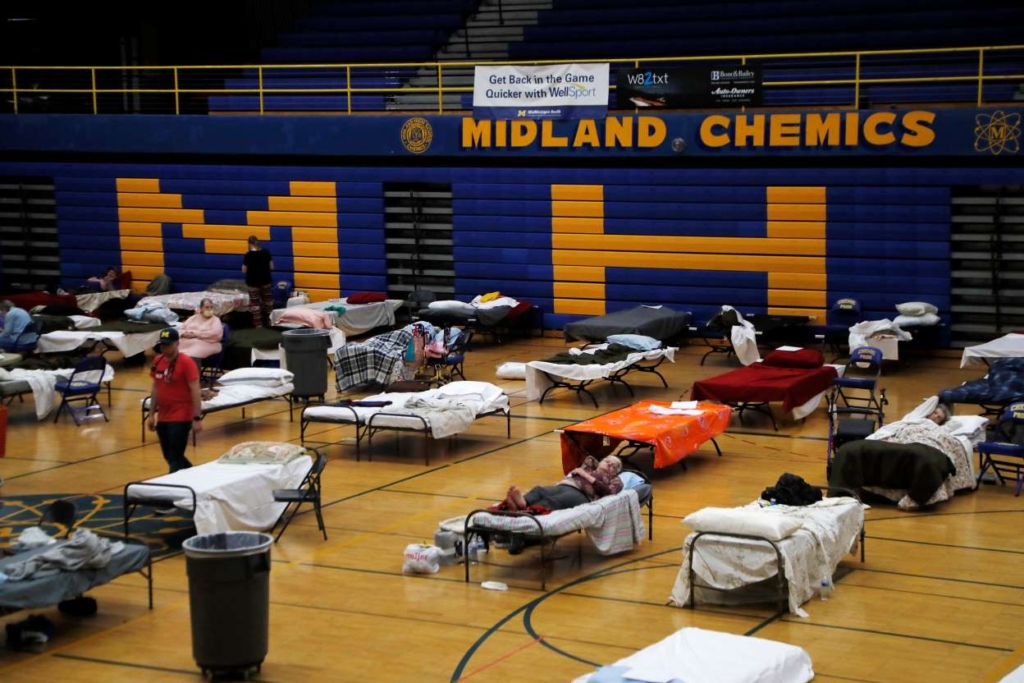
The record flooding caused by heavy rain and the failure of two dams has displaced up to 10,000 residents, who are sheltering with friends, family and local evacuation sites.
First responders are working within the Centers for Disease Control and Prevention guidelines while helping evacuees to safety. But concessions are also being made, as some of the social distancing recommendations are difficult to abide by when thousands of people are relocating to a handful of shelters. The CDC currently discourages gatherings of more than 10 people.
“It’s absolutely a challenge,” Midland County Public Health Director Fred Yanoski told the Free Press, part of the USA TODAY Network, in a phone interview. “Our message with normal COVID response is to discourage public gatherings and whatnot. And in this particular situation, it is unavoidable as we’ve had to move several thousand people into a handful of sheltering facilities. It is a challenge.” [more]
Social distancing in emergency shelters? Michigan flooding response complicated by COVID-19
